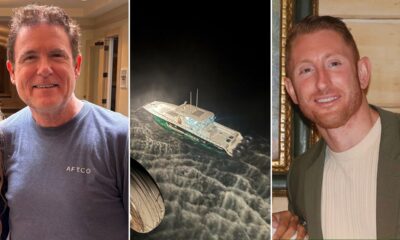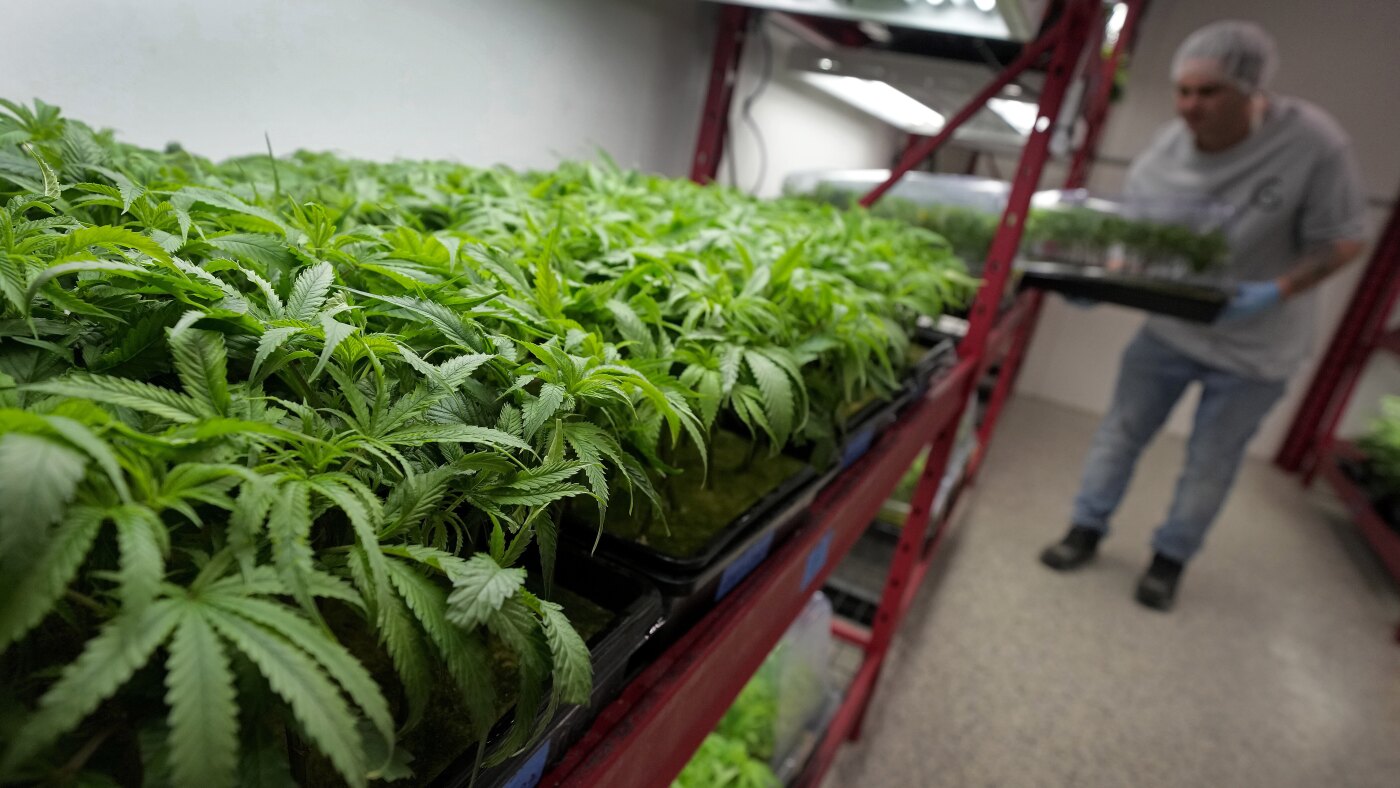Vermont
UVM’s state-of-the-art research vessel studies Lake Champlain health after recent flood
Early indicators have led local scientists to conclude that recent flooding is not impacting Lake Champlain’s health as much as last year’s storms, although there are still concerns for the watershed’s well-being. The July 10 and 11 storm added large amounts of phosphorus to the lake, which can drive cyanobacteria blooms later in the summer, said researchers aboard the Marcelle Melosira July 18.
Lake Champlain Sea Grant, University of Vermont and the Lake Champlain Basin Program presented information about the lake’s health, discussing stormwater runoff, microplastics and bacteria and how they affect the basin. The presentations were aboard the Marcelle Melosira, the University of Vermont’s research and teaching vessel.
A new way to study
The Marcelle Melosira, named after donor and former Sen. Patrick Leahy’s wife and the previous research vessel, began sailing Lake Champlain July 23, 2023. It’s docked outside the Rubenstein Ecosystems Science Laboratory on the Burlington waterfront.
The “one-of-a-kind” boat hosts cutting-edge technology and research equipment, according to Kris Stepenuck, Lake Champlain Sea Grant associate director.
The Marcelle Melosira runs tests to monitor water clarity, track invasive species and erosion. UVM professors and students, Lake Champlain Basin Program researchers and others use the vessel depending on what they’re monitoring at that time. College interns also help the researchers on the boat.
The hybrid boat can run for up to three hours on electric energy, according to interim Capt. Taylor Resnick. He is aboard the Marcelle Melosira on Monday to Friday, collecting data on the lake and how the basin − with waterways from Cabot to Rutland, and from Saranac Lake to Quebec − all play a role in lake health.
The boat is 20 meters long and 6 meters wide, with a capacity of 32 people. It was projected to be a 60% reduction in fossil fuel use from the previous vessel. The boat is equipped with:
- First-of-its-kind winch technology.
- Echo-sounding technology to ID and map underwater species distribution.
- Multi-net plankton and fish larvae sampler.
- Profiler to study large particles and zooplankton.
- Echoview software to process hydroacoustic data.
- Gas analyzer to measure gaseous compounds.
- Corer for sampling lake bottom sediment.
Watershed Alliance offers K-12 programs on the R/V Marcelle Melosira, which give elementary, middle and high school students and teachers the opportunity to learn firsthand about the study of limnology − the study of inland aquatic ecosystems − and to collect their own data on Lake Champlain with the aid of professional educators and lab research staff.
Looking at lake health post-flooding
Matthew Vaughan, chief scientist for the Lake Champlain Basin Program, spoke on the State of the Lake briefly, but refocused to talk about how flooding in the lake’s basin affects the water quality.
With high water flow comes different debris floating down rivers and into the lake. Sea Grant Director Anne Jefferson pointed out that water pollution comes in many forms. Bacteria, microplastics and trash from landfills are all serious concerns when looking at water health. She also said that there are unintentional effects of flooding; for example, someone’s Tupperware − something not intended to be trashed − floating out of their house during flooding.
Bacteria is a large concern when evaluating the lake’s health. Too much of a harmful bacteria can make the water unsafe, leading to closed beaches. While bacterial blooms happen naturally with warm weather and stagnant water, flooding exacerbates it.
“It’s about six times more phosphorus that we can capture on our floodplains than during those smaller, regularly occurring events,” Rebecca Diehl, research assistant professor in the UVM Department of Geography and Geosciences, said about this most recent flood.
Bacteria blooms could be seen from the Marcelle Melosira where the Winooski River meets the lake. It was impossible to miss the murky haze tinting the water, revealing where sediments and bacteria are flowing. Two UVM fellows performed a Secchi disk test, dropping a black-and-white disk attached to a measuring tape into the water to check the clarity. Once the disk becomes invisible to the naked eye, the measurement is recorded. They dropped the disk in the murky runoff water and in the clearer, more standard water. The difference in clarity was about a meter.
The researchers emphasized that it’s still early to have all the data about the effects of the recent flooding. They will continue to monitor the watershed and keep the public up to date with their findings.
Protecting our waters
On July 23, Sen. Peter Welch, D, Vt., Sen. Bernie Sanders, I-Vt., Senate Majority Leader Chuck Schumer, D-N.Y., and Sen. Kirsten Gillibrand, D-N.Y., introduced the bicameral Lake Champlain Basin Program Reauthorization Act − legislation that would reauthorize the Lake Champlain Basin Program for 10 years at $55 million to support interstate conservation and the health of the Lake Champlain Basin.
The bill would establish the Lake Champlain Basin Program to “formally administer the program to promote climate resilience and mitigation through ecosystem restoration,” according to a press release.
Jefferson said that prevention is the best course of action. Removing bacteria or microplastics is extremely challenging, especially at such a large scale. Learning about the watershed and finding the best solutions to preserve it is the work they’re going to focus on.
Sydney P. Hakes is the Burlington city reporter. Contact her at SHakes@gannett.com.

Vermont
VT Lottery Lucky For Life, Pick 3 results for Jan. 4, 2026
Powerball, Mega Millions jackpots: What to know in case you win
Here’s what to know in case you win the Powerball or Mega Millions jackpot.
Just the FAQs, USA TODAY
The Vermont Lottery offers several draw games for those willing to make a bet to win big.
Those who want to play can enter the MegaBucks and Lucky for Life games as well as the national Powerball and Mega Millions games. Vermont also partners with New Hampshire and Maine for the Tri-State Lottery, which includes the Mega Bucks, Gimme 5 as well as the Pick 3 and Pick 4.
Drawings are held at regular days and times, check the end of this story to see the schedule. Here’s a look at Jan. 4, 2026, results for each game:
Winning Lucky For Life VT numbers from Jan. 4 drawing
03-08-13-38-47, Lucky Ball: 02
Check Lucky For Life VT payouts and previous drawings here.
Winning Pick 3 numbers from Jan. 4 drawing
Day: 5-2-1
Evening: 0-7-7
Check Pick 3 payouts and previous drawings here.
Winning Pick 4 numbers from Jan. 4 drawing
Day: 7-8-2-2
Evening: 0-2-9-1
Check Pick 4 payouts and previous drawings here.
Feeling lucky? Explore the latest lottery news & results
Are you a winner? Here’s how to claim your lottery prize
For Vermont Lottery prizes up to $499, winners can claim their prize at any authorized Vermont Lottery retailer or at the Vermont Lottery Headquarters by presenting the signed winning ticket for validation. Prizes between $500 and $5,000 can be claimed at any M&T Bank location in Vermont during the Vermont Lottery Office’s business hours, which are 8a.m.-4p.m. Monday through Friday, except state holidays.
For prizes over $5,000, claims must be made in person at the Vermont Lottery headquarters. In addition to signing your ticket, you will need to bring a government-issued photo ID, and a completed claim form.
All prize claims must be submitted within one year of the drawing date. For more information on prize claims or to download a Vermont Lottery Claim Form, visit the Vermont Lottery’s FAQ page or contact their customer service line at (802) 479-5686.
Vermont Lottery Headquarters
1311 US Route 302, Suite 100
Barre, VT
05641
When are the Vermont Lottery drawings held?
- Powerball: 10:59 p.m. Monday, Wednesday, and Saturday.
- Mega Millions: 11 p.m. Tuesday and Friday.
- Gimme 5: 6:55 p.m. Monday through Friday.
- Lucky for Life: 10:38 p.m. daily.
- Pick 3 Day: 1:10 p.m. daily.
- Pick 4 Day: 1:10 p.m. daily.
- Pick 3 Evening: 6:55 p.m. daily.
- Pick 4 Evening: 6:55 p.m. daily.
- Megabucks: 7:59 p.m. Monday, Wednesday and Saturday.
What is Vermont Lottery Second Chance?
Vermont’s 2nd Chance lottery lets players enter eligible non-winning instant scratch tickets into a drawing to win cash and/or other prizes. Players must register through the state’s official Lottery website or app. The drawings are held quarterly or are part of an additional promotion, and are done at Pollard Banknote Limited in Winnipeg, MB, Canada.
This results page was generated automatically using information from TinBu and a template written and reviewed by a Vermont editor. You can send feedback using this form.
Vermont
Vermont’s congressional delegation condemns attack on Venezuela and capture of Maduro – VTDigger

Vermont’s congressional delegation condemned the U.S. military’s attack on Venezuela over the weekend that led to the capture of the country’s leader, Nicolás Maduro.
U.S. Sen. Bernie Sanders, I-Vt, and Vermont Democrats U.S. Sen. Peter Welch and U.S. Rep Becca Balint, all labeled Maduro a brutal authoritarian but said President Donald Trump’s attacks on the South American country exceeded his constitutional authority.
“Trump’s attack on Venezuela will make the United States and the world less safe. This brazen violation of international law gives a green light to any nation on earth that may wish to attack another country to seize their resources or change their governments,” Sanders said in a statement.
U.S. forces entered the Venezuelan capital of Caracas overnight Friday into Saturday, and more than 100 U.S. aircraft helped neutralize the country’s air defenses, the New York Times reported. More than 40 people were killed, according to Venezuelan authorities, though Trump said there were no Americans killed in the attack.
American troops captured both Maduro and his wife, Cilia Flores, later transporting them out of the country, according to news reports. U.S. Attorney General Pam Bondi said Maduro would face charges in the U.S. of narco-terrorism conspiracy and cocaine importation conspiracy, among other charges.
Trump said Saturday that the U.S. would “run” Venezuela while a transfer of power took place. The details of that plan were not immediately clear, though many of Trump’s comments focused on growing the Venezuelan oil industry.
Vermont’s top federal lawmakers wasted little time in condemning the military escalation. They had similarly criticized the staging of Vermont Air National Guard members in the Caribbean to support the military buildup against Venezuela.
“President Trump’s hunger for a regime change war makes it clear he doesn’t care about how this unauthorized and illegal action could cause further chaos and suffering in Venezuela. Has he learned nothing from Iraq, Afghanistan, and Libya?” Welch said in a statement Saturday. “This could lead us into another forever war, risking the lives of U.S. service members and hurting the economy.”
Balint, in her own statement, said the U.S. had made “these horrible mistakes before.”
“Americans do not want another war,” she said.
Vermont
Vermont by Hamilton Homebuilders | 4 bed, 3 bath mobile house tour

-

 World1 week ago
World1 week agoHamas builds new terror regime in Gaza, recruiting teens amid problematic election
-

 Indianapolis, IN1 week ago
Indianapolis, IN1 week agoIndianapolis Colts playoffs: Updated elimination scenario, AFC standings, playoff picture for Week 17
-

 Business1 week ago
Business1 week agoGoogle is at last letting users swap out embarrassing Gmail addresses without losing their data
-

 Southeast1 week ago
Southeast1 week agoTwo attorneys vanish during Florida fishing trip as ‘heartbroken’ wife pleads for help finding them
-

 Politics1 week ago
Politics1 week agoMost shocking examples of Chinese espionage uncovered by the US this year: ‘Just the tip of the iceberg’
-

 News1 week ago
News1 week agoRoads could remain slick, icy Saturday morning in Philadelphia area, tracking another storm on the way
-

 World1 week ago
World1 week agoPodcast: The 2025 EU-US relationship explained simply
-

 News1 week ago
News1 week agoMarijuana rescheduling would bring some immediate changes, but others will take time



















